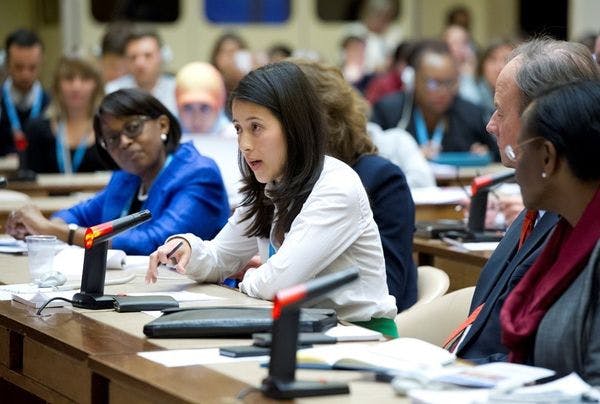Eliminating a global killer by 2030
For the last decade, those of us involved in the field of viral hepatitis have rallied together around a vision; a world where people living with viral hepatitis have access to safe and affordable care and treatment, transmission is halted and people do not face social marginalisation and inequality. This week we may be closer to that goal than we have ever been before.
At the 69th World Health Assembly in Geneva (23 – 28 May), 194 countries will decide whether to adopt or reject WHO’s first ever Global Health Sector Strategy for Viral Hepatitis (GHSS), which sets a goal of eliminating hepatitis B and C by 2030 and includes a set of prevention and treatment targets which, if reached, will reduce annual deaths by 65% and increase treatment to 80%, saving 7.1 million lives globally by 2030.
Claiming the lives of 1.4 million per year (more than HIV/AIDS or malaria), these global killers are affecting more and more people with 10 million new cases each year - and a high-majority of these infections being amongst people who inject drugs. Globally 1 in 2 people who inject drugs (PWID) are living with hepatitis C and they are one of the most vulnerable, discriminated and marginalised groups, experiencing a range of health, socioeconomic and legal challenges, often with poor outcomes. Like the disease itself, they are often ignored and de-prioritised.
With vaccines and effective treatments for hepatitis B and a cure for hepatitis C now available, elimination of viral hepatitis is feasible and achievable, but will require a greater focus on at-risk populations and a dramatic scale up in interventions; at a global level, coverage of harm reduction programmes for PWID, including needle and syringe programmes, which are proven to prevent the transmission of viral hepatitis, is less than 10%.
This Strategy, with its ambitious targets can change that; calling for a major increase in the provision of sterile needles and syringes to people who inject drugs, from a current 20 needles and syringes per person who injects drugs per year to 300 by 2030, it represents a turning point.
Furthermore, the Strategy comes as a follow-up to the Sustainable Development Goals (SDGs), which includes Target 3.3, a commitment to combating hepatitis and Target 3.5 around strengthening the prevention and treatment of substance abuse.This means that all United Nation member states are required to reach these targets in order to meet the obligations of the SDGs. As such, the GHSS represents governments’ best way of achieving these goals.
We are so close but we are not there yet. Some countries still feel uneasy about all the work and scaling up of interventions needed to eliminate viral hepatitis.
We, as a community, must join together to show the adoption of the Strategy really is a no-brainer: reducing mortality rates will not only mean a reduction in personal cost of viral hepatitis, but will also mean reduced financial costs with health systems no longer having to deal with huge numbers of people suffering from the results of untreated viral hepatitis, such as liver cancer and cirrhosis.
Ahead of the Assembly, we and our 230 member organisations are calling on governments to support the adoption of the Strategy and its targets. If governments reject the Strategy, they will be perpetuating the neglect hepatitis has been subject to for years and turning their backs on saving 7.1 million lives. They will also be ignoring one of the key commitments of the SDGs, which is leave no one behind, a commitment so apt for people living with viral hepatitis and for those who inject drugs, many of whom are marginalised and discriminated against by society. It’s time we properly address viral hepatitis and rid the world of these cancer causing agents that burden so many people, once and for all.
To find out more about the Strategy, watch our animated video which also introduces NOhep, a global movement to eliminate viral hepatitis, to be launched on World Hepatitis Day this year (July 28 2016).
The World Hepatitis Alliance (WHA) is a patient-led and patient driven non-governmental organisation (NGO), whose membership is comprised of organisations from across the world working in the field of viral hepatitis.
Keep up-to-date with drug policy developments by subscribing to the IDPC Monthly Alert.
Thumbnail: World Hepatitis Alliance
